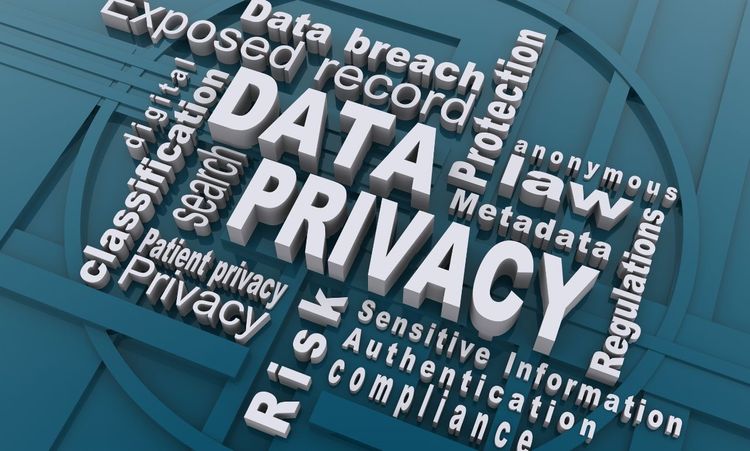What Are The Legal Obligations For Using Artificial Intelligence?
Artificial intelligence is transforming the way we work, live, and interact with technology. However, here's the thing most people don't realize: using AI comes with profound legal implications. Companies are scrambling to understand what they're supposed to do, while regulators are playing catch-up with technology that moves faster than legislation can keep pace. The legal landscape for artificial intelligence systems is complex and constantly evolving. We're talking about everything from data privacy regulations to consumer protection laws, and trust me, the stakes are higher than you might think. In this article, we'll break down the key legal frameworks, explore your obligations as a business owner or developer, and help you understand what's coming next in AI governance.
Key Legal Frameworks for AI
The European Union's AI Act
The EU's AI Act is the world's first comprehensive AI regulation, marking a significant milestone in the development of AI regulations. This legislation takes a risk-based approach to AI governance, categorizing artificial intelligence technologies into different risk levels. High-risk AI systems face the strictest requirements. These include AI used in critical infrastructure, education, employment, and law enforcement. Companies deploying these systems must conduct thorough risk assessments, maintain detailed documentation, and ensure human oversight remains in place. The Act also tackles prohibited AI practices. Facial recognition technology in public spaces gets heavy restrictions, while AI systems that exploit vulnerabilities or use subliminal techniques are outright banned. Social scoring systems? They're off the table entirely. Generative AI models also face special obligations. Providers must mark AI-generated content, prevent the generation of illegal content, and publish summaries of their training data. The transparency requirements are extensive, and companies can no longer operate without a clear understanding of them.
Data Privacy Regulations in the U.S.
 American data privacy laws create a patchwork of requirements for AI systems. The California Consumer Privacy Act (CCPA) grants consumers the right to access and control their personal information, including data used to train artificial intelligence (AI) models. Financial institutions face additional scrutiny from the Consumer Financial Protection Bureau. They're required to explain automated decision-making technology when it affects consumers' financial lives. The Equal Credit Opportunity Act also applies to AI-powered lending decisions. Healthcare AI systems must comply with the Health Insurance Portability and Accountability Act (HIPAA) regulations. This means protecting patient data throughout the AI lifecycle, from training to deployment. The Department of Health and Human Services has made it clear that AI doesn't create exemptions from existing privacy rules.
American data privacy laws create a patchwork of requirements for AI systems. The California Consumer Privacy Act (CCPA) grants consumers the right to access and control their personal information, including data used to train artificial intelligence (AI) models. Financial institutions face additional scrutiny from the Consumer Financial Protection Bureau. They're required to explain automated decision-making technology when it affects consumers' financial lives. The Equal Credit Opportunity Act also applies to AI-powered lending decisions. Healthcare AI systems must comply with the Health Insurance Portability and Accountability Act (HIPAA) regulations. This means protecting patient data throughout the AI lifecycle, from training to deployment. The Department of Health and Human Services has made it clear that AI doesn't create exemptions from existing privacy rules.
AI and Existing Legal Obligations
Intersection of AI with Current Laws
Here's what many companies miss: AI doesn't exist in a legal vacuum. Traditional laws apply to artificial intelligence systems, often in ways that aren't immediately obvious. Employment discrimination laws cover AI-powered hiring tools. The Equal Employment Opportunity Commission has issued guidance clarifying that algorithmic discrimination is still considered discrimination. Companies using AI for recruitment, performance evaluation, or promotion decisions must ensure these systems don't perpetuate bias. Consumer protection regulations extend to AI-enabled products and services. The Federal Trade Commission has been aggressive in pursuing companies whose AI systems engage in deceptive practices. False claims about AI capabilities can trigger enforcement actions. Contract law governs the development and deployment of AI agreements. When things go wrong with an AI system, traditional legal principles determine liability and the allocation of damages. The complexity arises from determining where human responsibility ends, and algorithmic decision-making begins.
Challenges in Applying Existing Legal Frameworks to AI
Traditional legal frameworks weren't designed for algorithmic systems that learn and evolve. Courts struggle with questions of foreseeability when AI systems produce unexpected outcomes. Causation becomes murky in AI contexts. When an automated decision-making system causes harm, proving the direct link between specific inputs and outputs can be nearly impossible. This creates challenges for both plaintiffs seeking damages and companies trying to assess their exposure. The "black box" problem complicates compliance efforts. Many AI systems, intense learning models, make decisions through processes that even their creators don't fully understand. How do you ensure compliance with transparency requirements when you can't explain how your system works?
Roles and Responsibilities in AI Compliance
Obligations for Corporations
Companies using AI face a wide range of compliance obligations. Risk assessment comes first – you need to understand the type of AI system you're deploying and the applicable legal requirements. Documentation requirements are extensive. Companies must maintain records of AI system design, training data, testing procedures, and deployment decisions. These records aren't just for internal use; regulators expect to see them during investigations. Ongoing monitoring is crucial. AI systems can drift over time, producing different outcomes as they encounter new data. Companies must establish procedures to detect and correct these changes before they give rise to legal problems. Board-level oversight is becoming standard practice. Directors need to understand the risks associated with AI and ensure that management has appropriate controls in place. The business judgment rule won't protect boards that ignore AI governance entirely.
Developer's Role in Ensuring Compliance
AI developers carry significant responsibility for compliance, even when they're not the end users of their systems. Model weights and training procedures must meet regulatory standards from the outset. Technical assistance to downstream users is often required. Developers can't just hand over an AI model and walk away – they need to guide compliant deployment and use. Dual-use foundation models face special scrutiny. When AI systems could be used for both beneficial and harmful purposes, developers must implement safeguards and monitor how their technology is being used.
Consumer Awareness and Rights
Natural persons have rights regarding AI systems that affect them. The right to know when AI is being used in decision-making is becoming standard across jurisdictions. Appeal rights are expanding. Consumers are increasingly entitled to challenge automated decisions and request a human review. Companies must establish procedures for handling these requests. Explanation rights create new obligations. When AI systems make consequential decisions that affect individuals, those individuals often have the right to understand how the decision was made.
Ethical Considerations in AI Deployment
Ethical AI deployment goes beyond legal compliance. Companies are discovering that meeting minimum legal requirements isn't enough to maintain public trust and avoid reputational damage. Algorithmic fairness requires proactive measures to identify and mitigate bias. This isn't just about avoiding discrimination lawsuits – it's about ensuring AI systems serve all users equitably. Transparency in virtual environments and online platforms is becoming a competitive advantage. Users prefer services that are transparent about their use of AI and decision-making processes.
Regulatory Bodies and Enforcement
 Multiple agencies oversee AI compliance in the United States. The White House AI Council coordinates policy across the government, while individual agencies enforce regulations within their respective domains. The Department of Defense and the Department of Energy have specific requirements for AI systems used in national security contexts. These requirements often exceed commercial standards, creating additional obligations for contractors. Relevant agencies are still developing their enforcement approaches. Early cases suggest that regulators will focus on companies that ignore AI risks entirely rather than those making good-faith compliance efforts.
Multiple agencies oversee AI compliance in the United States. The White House AI Council coordinates policy across the government, while individual agencies enforce regulations within their respective domains. The Department of Defense and the Department of Energy have specific requirements for AI systems used in national security contexts. These requirements often exceed commercial standards, creating additional obligations for contractors. Relevant agencies are still developing their enforcement approaches. Early cases suggest that regulators will focus on companies that ignore AI risks entirely rather than those making good-faith compliance efforts.
Future of AI Governance
International coordination is increasing. The United Nations and the Council of Europe are collaborating on global AI governance frameworks that aim to harmonize requirements across borders. Pilot programs are testing new regulatory approaches. Rather than imposing one-size-fits-all rules, some jurisdictions are experimenting with sector-specific requirements and sandbox environments. The approach to excellence in AI governance will likely emphasize outcomes over processes. Regulators are shifting toward performance-based standards that prioritize preventing harm over mandating specific technical approaches.
Conclusion
Understanding legal obligations for artificial intelligence is no longer optional – it has become a business necessity. The regulatory landscape is complex and evolving, but the core message is clear: companies must take AI governance seriously. Innovative businesses are getting ahead of these requirements rather than playing catch-up. They're building compliance into their AI development processes from the ground up, not treating it as an afterthought. The companies that thrive in this new environment will be those that view AI legal obligations not as obstacles but as opportunities to build better, more trustworthy systems. The future belongs to organizations that can innovate responsibly while meeting their legal duties.



